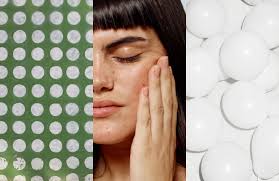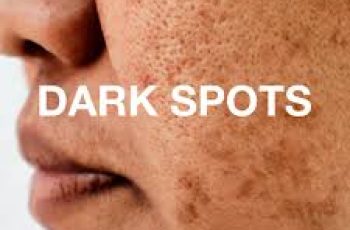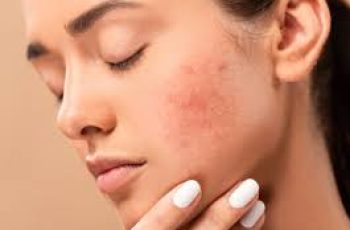
How To Get Rid of Milia
Ever found you have a flare-up of small white bumps that appear around the eyes and cheeks? They may look like whiteheads but are very different, as confusing as it can be there are some ways you can tell what exactly you are dealing with and the best ways of looking after your skin whilst safely getting rid of milia.
What is milia?
Milium are small, white cyst like bumps that usually appear around the nose, cheeks and under eye area. When there are multiple milium cysts they are called milia and as mentioned they may look a little like the blemishes known as whiteheads. They appear small and done-shaped but rarely cause discomfort, however for some may find they become irritated especially when frequently exposed to rough pillowcases or towels. There are a few ways you can experience milia:
Blistering of the skin due to skin conditions such as epidermolysis bullosa
Contact with irritating plants such as poison ivy
Long-term use of steroid cream
Long-term sun damage
Results of skin resurfacing procedures such as dermabrasion and laser resurfacing
Surface burns and burn related wounds
You may also find that milia becomes a more regular occurrence as we age, this is a result of the skin losing its ability to naturally exfoliate itself and there is a build-up in dead skin cells, dirt, bacteria and impurities.
There are many different types of milia, for example you may have heard of infants being born with “baby acne” which is linked to the hormones from their mothers and generally disappears two-four weeks after birth. The other main types are firstly formed when the natural keratin found in the body becomes trapped and develop into cysts and the second is a result after there is an injury to the skin surface such as a burn or blistering that causes the pores to become clogged.
How do I get rid of milia on my face?
Quite often what you will find is milia disappear over time on the own accord, however if you are wanting a more rapid result, there are a few at home habits you can use to keep the skin clear.
Cleanse daily- Use a gentle, non-foaming cleanser daily to keep the skin clean of any impurities that come into contact with the skin on a daily basis.
Gentle exfoliation- Use an exfoliating toner containing either an AHA such as glycolic acid or BHA salicylic acid depending on your skin type to slough away the build-up of dead skin cells, excess sebum and other forms of bacteria. Be careful not to over-exfoliate as this can lead to the skin becoming irritated and stripped of vital oils and water.
Daily SPF- Applying a daily SPF will keep your skin protected from any further damage caused by exposure to UV rays and other environmental aggressors.
Do not squeeze- As mentioned before, these may look a little like spots, but it is best not to pick or squeeze them as this can result in infection and scarring on the surface of the skin.
Avoid heavy products- Anything with a thick cream, or oil base can often cause more milium, by switching to a light-weight gel-based products will keep your skin hydrated and free of further flare-ups.
Apply face masks- Using a clay face mask two- three times a week will detox the skin and clear it of any remaining impurities sitting on the surface of the skin. By removing this barrier on the skin you will find the products you apply afterwards absorb more effectively.
Skin peels- professional treatments such as skin peels will remove the outer surface of dead skin cells leaving you with fresh, new glowing skin and no sign of milia.
By sticking to this simple routine you will find any problems you have with milia are reduced and further outbreaks will become less likely to occur.
What causes milia under eyes?
The causes of milia under the eyes are the same as anywhere on the skin. If left alone they will also disappear over time but if you are wanting professional treatment you can consult with a dermatologist who will suggest one of the following:
Deroofing- this is performed with a sterilised needle used to carefully remove the milia
Cryotherapy- liquid nitrogen freezes the milia, great option for the cheeks and nose, but isn’t usually recommended for the eye area
Laser ablation- small laser is used to open the cysts and rid them of the keratin build-up.
There are also some things you can try at home to keep milia at bay, such as the following:
Regularly clean and moisturise the skin to keep the skin hydrated and healthy encouraging the new skin cells to come to make their way to the surface of the skin and loosen the keratin trapped under the surface of the millia.
Use a serum formulated for the under-eye area enriched in vitamin E and A will with exfoliate the skin as well as deeply nourishing it.
Apply eye masks enriched in hyaluronic acid two to three times a week to lock moisture in and keep it hydrated.
There you have some of the best professional treatments and skincare products to use in your daily routine that will help maintain the health of your under eye and prevent any milia developing.
What happens if you pop milia?
Unlike spots and whiteheads, milium don’t have an opening onto the skin surface. Any attempts of squeezing and popping them will not have the same results as spots but will instead lead to redness, inflammation and scarring on the skin. This will lead to them remaining on the surface for a considerably longer amount of time compared to if you would either leave them to disappear on their own, or by using the suggested treatment and products I’ve already mentioned.
Do milia go away?
As bothersome as milium can be it’s common for the cysts to clear up overtime. For babies you can expect them to clear-up within a few weeks, compared to older children and adults as this can take a few months. Just remembering to keep the skin clean and looked after with a selection of nourishing and effective skincare formulations, you’ll be rid of milia in no time. If you find the milium to not respond to any of these suggestions and products after a number of weeks it may be an idea to seek the help from a doctor or dermatologist to look into further professional skin treatments.
Don’t forget if you have any more questions about milia or other skin concerns you can find me over on Procoal’s Instagram, come and join the skin chat.


